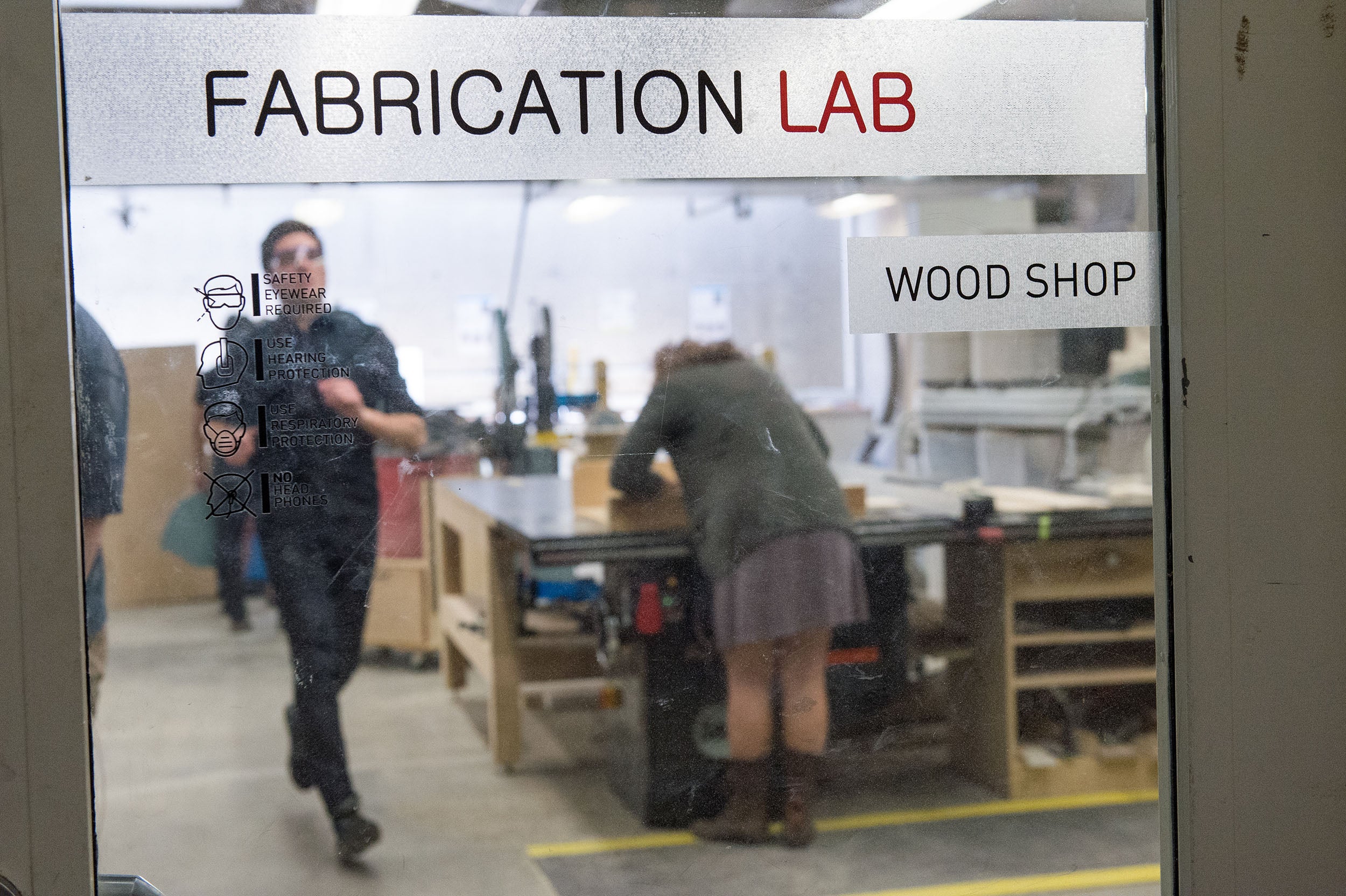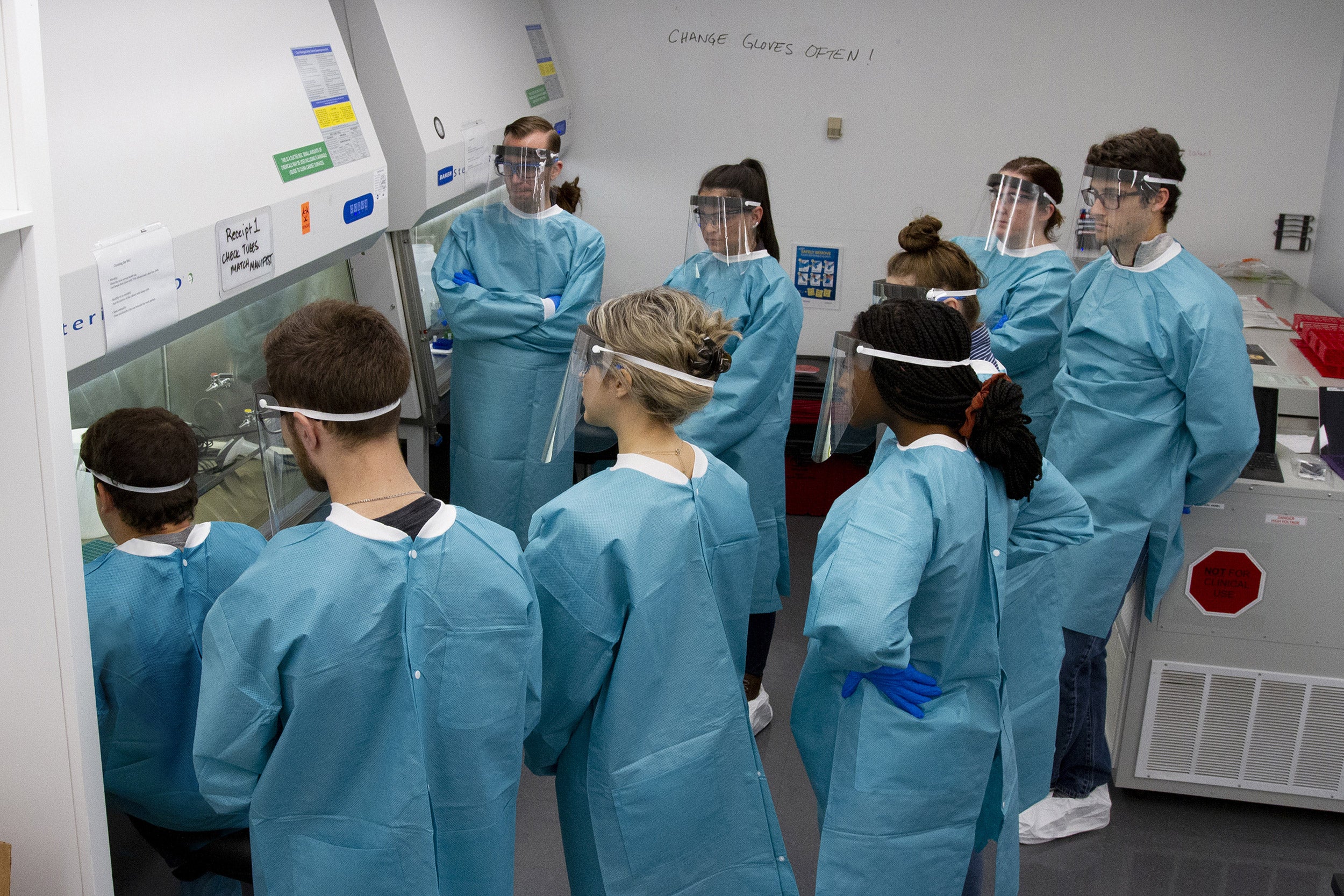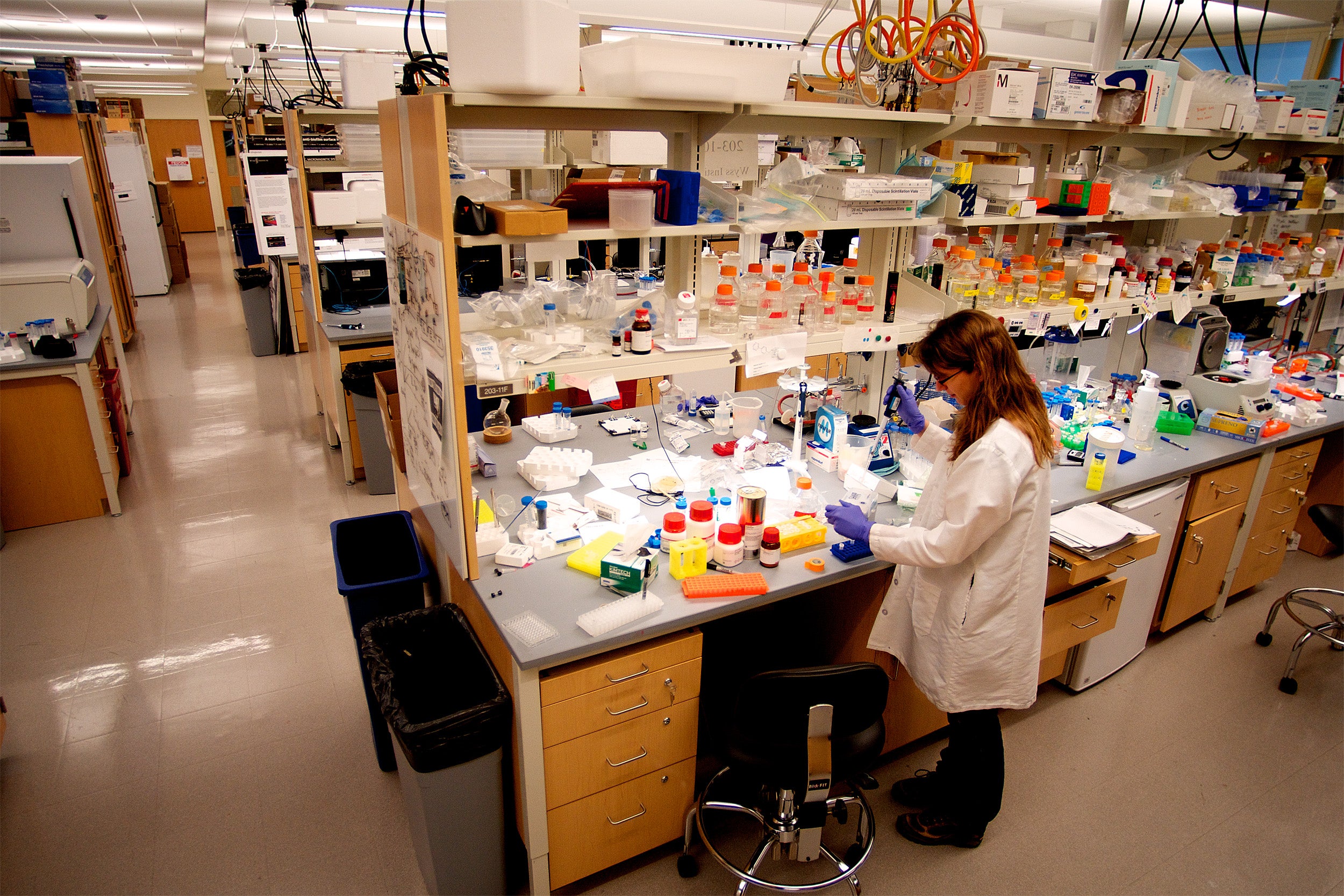
While the majority of the Wyss Institute’s members are working remotely, a small but dedicated team is still coming into the lab to conduct research to help understand, treat, and cure COVID-19.
Photos courtesy of the Wyss Institute at Harvard University
‘The world changed, so we changed with it’
Wyss Institute members pull together to take on COVID-19
On March 13, as cases of COVID-19 ballooned across the globe, hundreds of researchers at the Wyss Institute at Harvard University were directed to work from home within five days to minimize the risk of infection. The only people who would be allowed in the buildings after that point would be those performing critical functions like taking care of animals and maintaining equipment, or those working on fighting the novel coronavirus pandemic.
By the following Wednesday, more than 40 people from six teams of scientists at the Institute had submitted petitions to shift their focus entirely to COVID-19, voluntarily putting their own research on hold in exchange for spending long, lonely days and nights in mostly-deserted labs, racing to fight a foe that they couldn’t see but knew was very, very real.
“It was self-assembly at its best — the spontaneous coalescence of teams of people who said, ‘I want to work on solving this problem,’ rather than ‘That’s not my job,” said Ayis Antoniou, the Wyss Institute’s Director of Administration. “The way people reacted to this crisis is exactly how they react to new situations every day at the Wyss Institute — the world changed, so we changed with it.”
Keeping an institute open, remotely
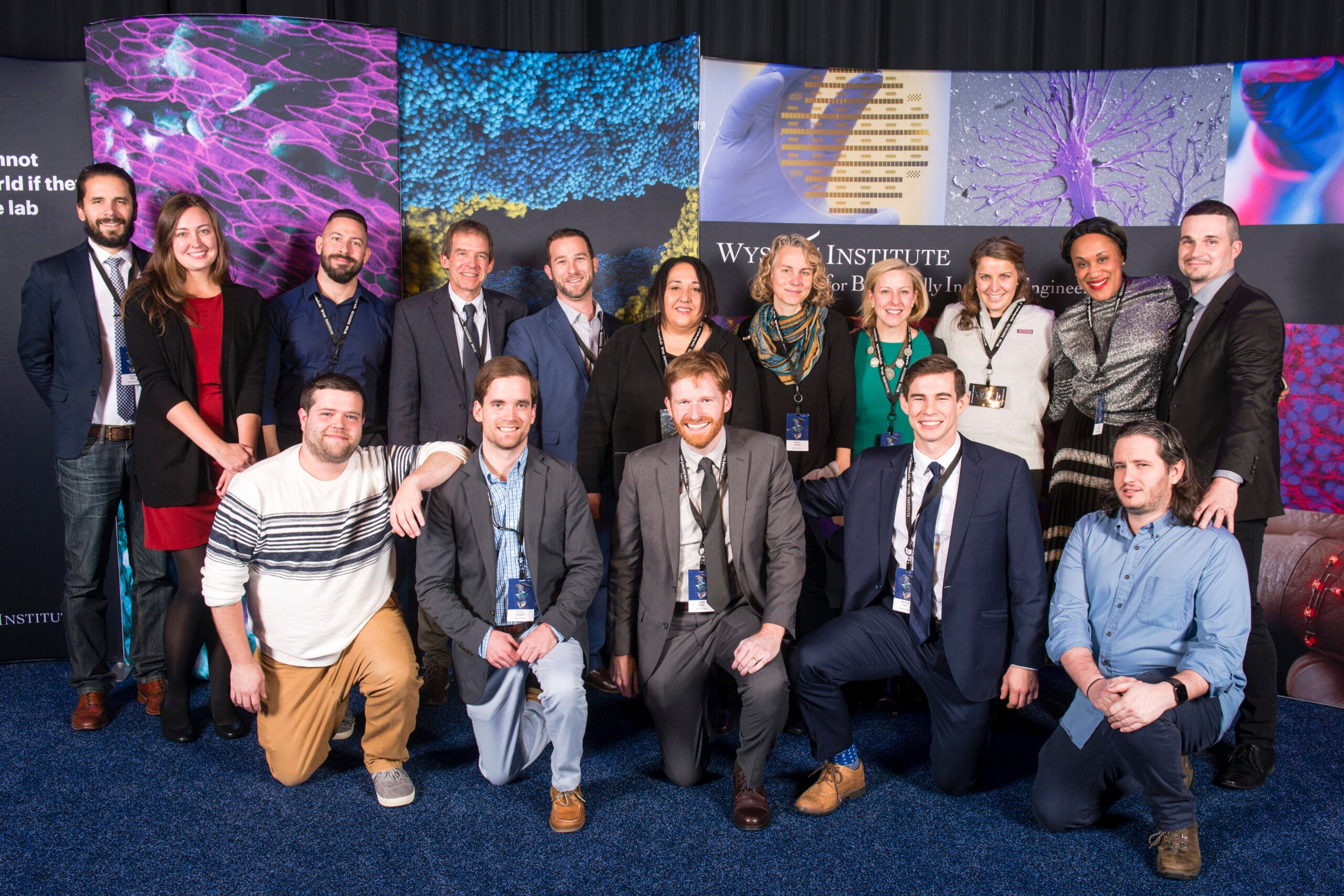
While the decision to allow and support COVID-19 research may have been a no-brainer, actually figuring out how to do that in the midst of shifting to remote work proved to be a herculean task. “The days leading up to March 18th were crazy — we needed to make sure things like lab safety and ordering, and receiving supplies were functional remotely, but also that we had enough people on-site to keep things running,” said Greg Ryan, associate director of procurement services.
Ryan along with dozens of other Wyss members from the operations, administration, and facilities teams jumped in and contributed their time and expertise to ensure that COVID-19 research could continue smoothly. Some of their on-the-fly solutions include a makeshift shipping and receiving room that is currently set up in the dining area of one of the Institute’s floors, and a wireless headset-enabled “buddy system” that the researchers use to check in with each other while they’re working in the lab.
“Normally we have about 250 people working in the lab spaces at our Longwood site on a given day, so right now with only about 45 people cleared to be here doing COVID-19 research, you actually have to hunt for people if you need them,” said Rob Rasmussen, the Wyss Institute’s director of research operations. “All you hear is the white noise of the ventilation system, no conversations — it’s very calm and quiet, almost like being in an ashram.”
Coronavirus collaborations
But just because the labs seem calm doesn’t mean work isn’t getting done — if anything, more is happening now than ever. “The collaborations I’m seeing are unprecedented,” said Rasmussen. “George Church, Jim Collins, David Mooney, and Don Ingber are all applying their unique approaches to develop a surrogate non-COVID-19 coronavirus for their labs to study, which I’ve never seen before. COVID-19 is really serving as this binding force to bring major players together to solve a problem that the world urgently needs to have solved.”
While the majority of the Wyss Institute’s employees, students, and postdocs are working from home, those in the lab are taking on the coronavirus pandemic on a number of fronts, including redesigning much-needed face masks for mass manufacturing, creating rapid diagnostic tests, identifying existing drugs that might treat the virus or prevent its spread, and engineering a vaccine to prevent healthy people from getting sick.
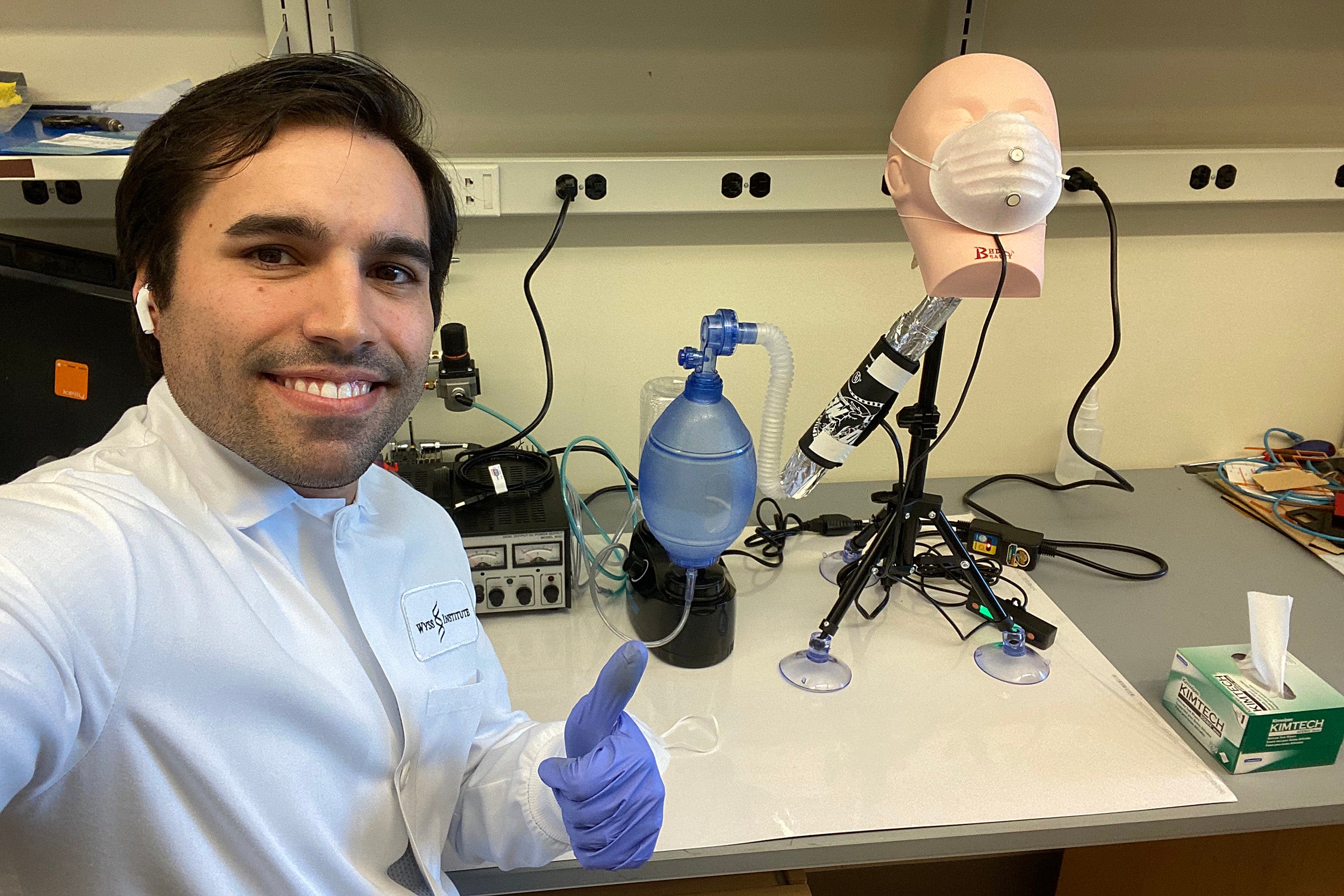
“This period of time when so many other activities have slowed down has allowed people to focus their energies on the specific problem of COVID-19 rather than having a portfolio of multiple different activities, which is a big shift in our mode of operation. I think that this kind of flexibility and scrappiness has been built into the Wyss Institute, because from the very beginning we committed ourselves to doing things differently than a typical university lab. Reorienting our research in response to an urgent, pressing need on a dime came very naturally to us,” said Antoniou.
More like this
As the COVID-19 pandemic has continued to worsen, other organizations facing their own problems have turned to the Wyss Institute for help. Beth Israel Deaconess Medical Center, facing a distressing shortage of the nasopharyngeal swabs used to diagnose COVID-19 (which are manufactured in northern Italy), reached out to Ingber, the Wyss Institute’s founding director, asking for help. Ingber relayed the message to his colleagues, and a group of researchers immediately began working on a solution in the form of injection-molded swabs that could be mass-manufactured quickly. The team is currently working with clinical and industrial partners to test their design’s effectiveness and scalability, and are working with their clinical collaborators to begin testing them in patients within the week.
“I am extremely proud of how quickly the Wyss Institute has come together to fight COVID-19 in such a short period of time,” Ingber said. “It all pulled together over one weekend. All of the teams are deploying their unique skills and approaches to fight this virus in a highly interdisciplinary and openly collaborative way, and I am confident that our contributions will help bring this pandemic to an end.”



